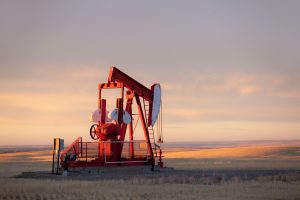 The Canadian government recently reaffirmed its commitment to reduce methane emissions from the oil and gas sector by 40 to 45% below 2012 levels by 2025 as part of the Pan-Canadian Framework. In April 2018, the federal government published comprehensive regulations intended to achieve this commitment.
The Canadian government recently reaffirmed its commitment to reduce methane emissions from the oil and gas sector by 40 to 45% below 2012 levels by 2025 as part of the Pan-Canadian Framework. In April 2018, the federal government published comprehensive regulations intended to achieve this commitment.
Methane causes 25% of the warming that we are experiencing today, and the largest source of industrial emissions is from the oil and gas industry. Reducing emissions by 40-45% by 2025 will be equivalent to shutting down 1,300 coal plants — or roughly one-third of the coal plants around the world.
Canadian provinces have been allowed the opportunity to develop their own sets of regulations, to better consider regional variances of their oil and gas industry. Canada’s three major oil and gas producing provinces — British Columbia, Alberta and Saskatchewan — each chose to develop their own regulations. The provincial rules, however, are only allowed to supersede the federal ones if they will achieve the same levels of reductions.
An analysis prepared by EDF, along with Pembina Institute, David Suzuki Foundation and Environmental Defence Canada, lays out key practices and metrics that successful methane regulations must include. The analysis looks at both federal and provincial rules to see if they meet these best practices. It also compares proposed provincial and federal rules to determine if provincial rules meet the requirements set out by federal rulemaking process.
5 best practices for Canadian methane regulations Share on X5 best practices for oil and gas methane regulations
- Regulations must achieve ambitious methane emission reductions, in line with the Paris Agreement commitments, across multiple segments of the oil and gas sector, from all significant emission sources, new and existing.
- Intentional, scheduled venting from pneumatic controllers and compressor stations must be limited.
- Regulations must reduce venting and flaring from storage tanks and oil well heads. Unfortunately, as proposed, federal regulations only achieve around 80% of needed reductions.
- Regular leak detection and repair must be required.
- Reliable record keeping, reporting and measurement procedures must be established to ensure transparency of the compliance process.
How do provincial regulations stack up?
British Columbia’s draft regulations, released in December 2018, include strong elements but needed improvements —especially with leak detection and repair requirements — to be equivalent to the federal rule. However, the most recent modeling in July 2019 by federal officials, using new field data, indicates that British Columbia’s rules could achieve more reductions than originally thought. In contrast, Alberta’s rules are much weaker in many areas than the federal regulations and as a result, will not achieve nearly the same reductions. Meanwhile, Saskatchewan has unfortunately taken a unique outcomes-based approach that lacks measurement, reporting and enforcement standards needed to successfully achieve the committed federal methane reductions of 40-45%.
There are many ways provincial regulations can be improved to meet the federal standard. By understanding best practices for reducing methane emissions, the federal government is better equipped to determine how provincial regulations meet — or don’t meet — federal standards, and ensure that all Canadians, no matter in which province they reside, are protected from this source of pollution.









